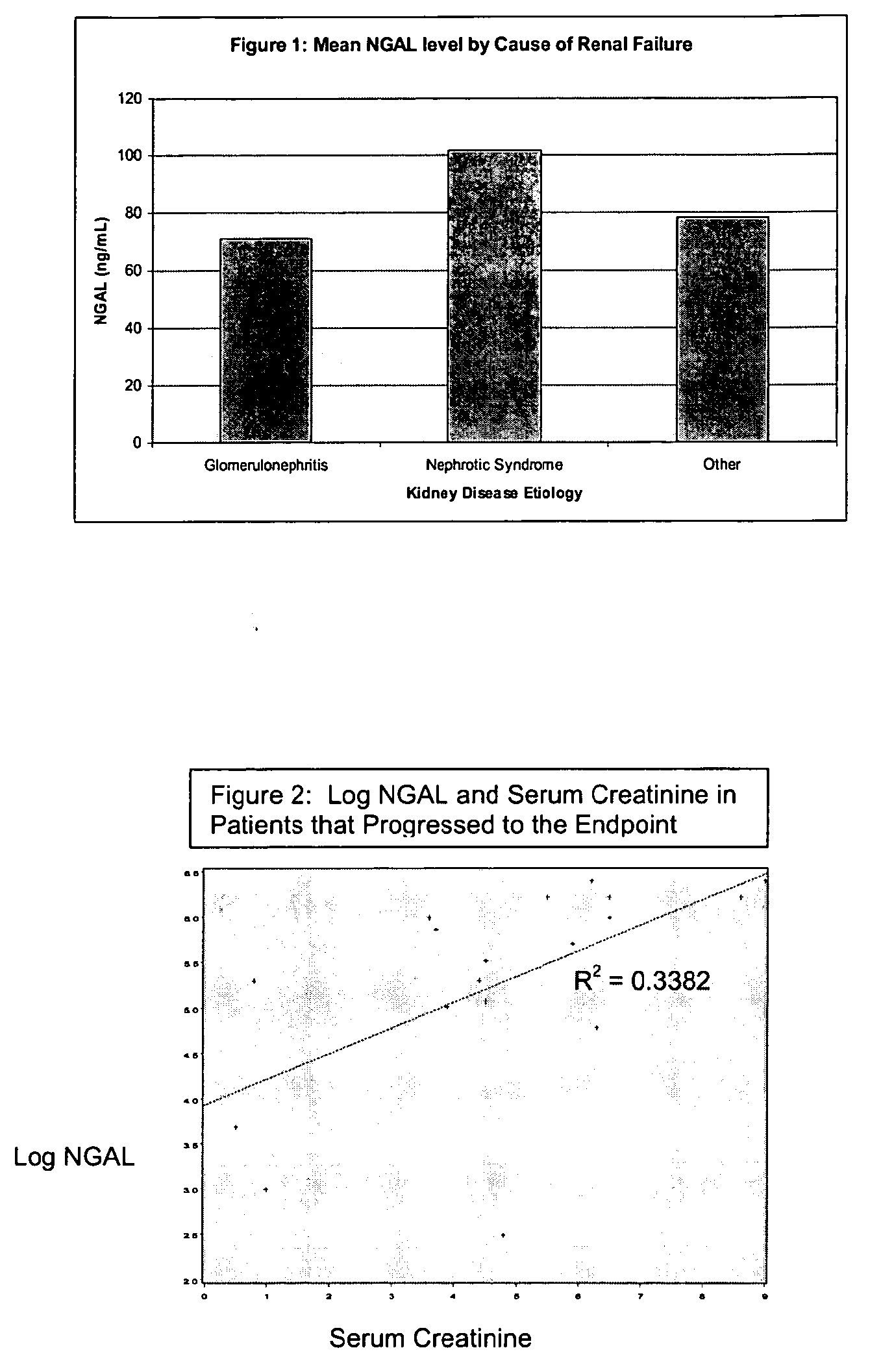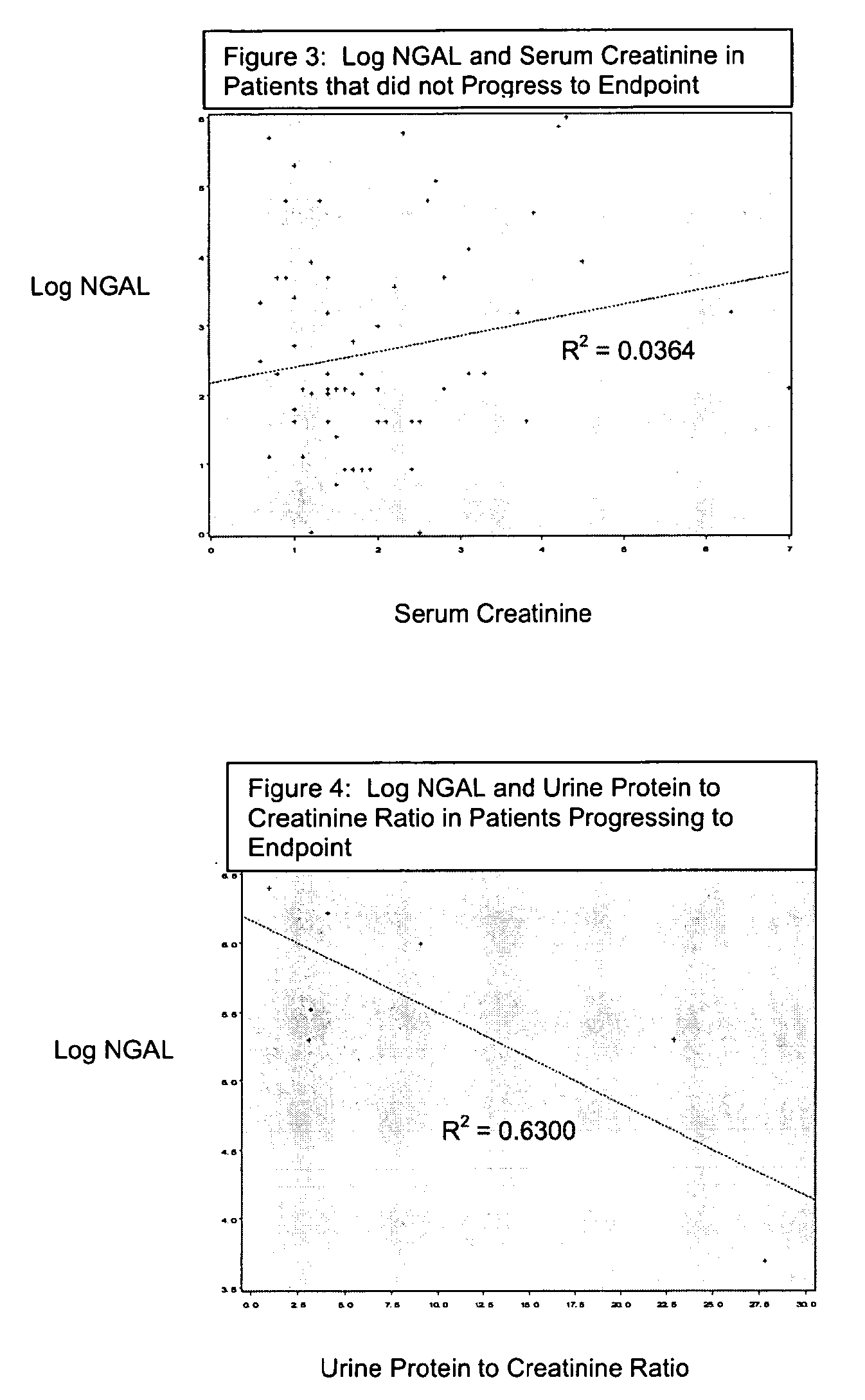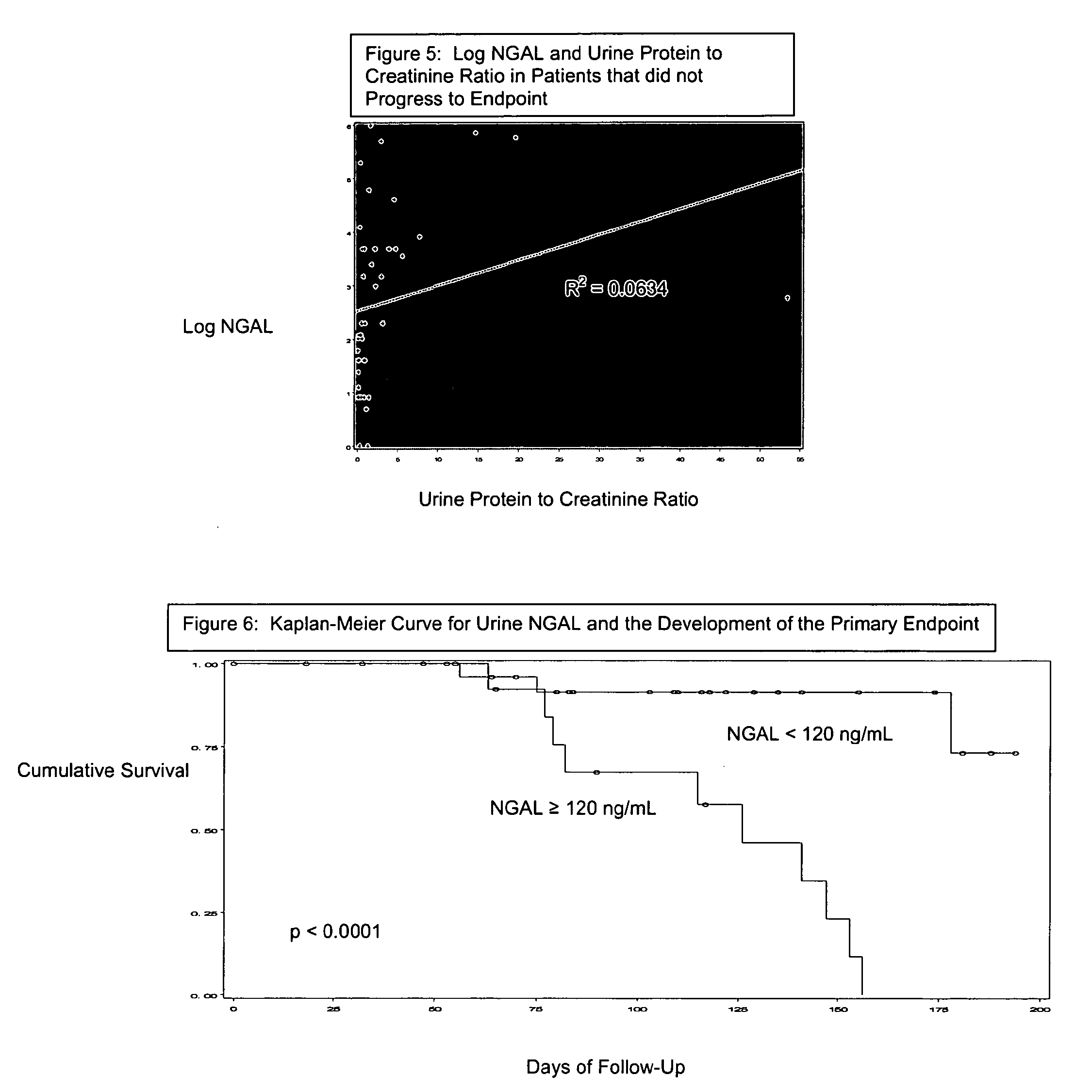Detection of NGAL in chronic renal disease
a technology for chronic renal disease and detection of ngal, which is applied in the direction of instruments, biological material analysis, measurement devices, etc., can solve the problems of high disease progression rate, limited ability to recognize early kidney disease, and diagnosis of kidney diseas
- Summary
- Abstract
- Description
- Claims
- Application Information
AI Technical Summary
Benefits of technology
Problems solved by technology
Method used
Image
Examples
Embodiment Construction
[0031] As used herein, the phrases “chronic renal tubular cell injury”, “progressive renal disease”, “chronic renal failure (CRF)”, “chronic renal disease (CRD)”, “chronic kidney disease (CKD)” all shall include any kidney condition or dysfunction that occurs over a period of time, as opposed to a sudden event, to cause a gradual decrease of renal tubular cell function or worsening of renal tubular cell injury. For example, chronic kidney disease includes (but is not limited to) conditions or dysfunctions caused by chronic infections, chronic inflammation, glomerulonephritides, vascular diseases, interstitial nephritis, drugs, toxins, trauma, renal stones, long standing hypertension, diabetes, congestive heart failure, nephropathy from sickle cell anemia and other blood dyscrasias, nephropathy related to hepatitis, HIV, parvovirus and BK virus (a human polyomavirus), cystic kidney diseases, congenital malformations, obstruction, malignancy, kidney disease of indeterminate causes, lu...
PUM
 Login to View More
Login to View More Abstract
Description
Claims
Application Information
 Login to View More
Login to View More - R&D
- Intellectual Property
- Life Sciences
- Materials
- Tech Scout
- Unparalleled Data Quality
- Higher Quality Content
- 60% Fewer Hallucinations
Browse by: Latest US Patents, China's latest patents, Technical Efficacy Thesaurus, Application Domain, Technology Topic, Popular Technical Reports.
© 2025 PatSnap. All rights reserved.Legal|Privacy policy|Modern Slavery Act Transparency Statement|Sitemap|About US| Contact US: help@patsnap.com



